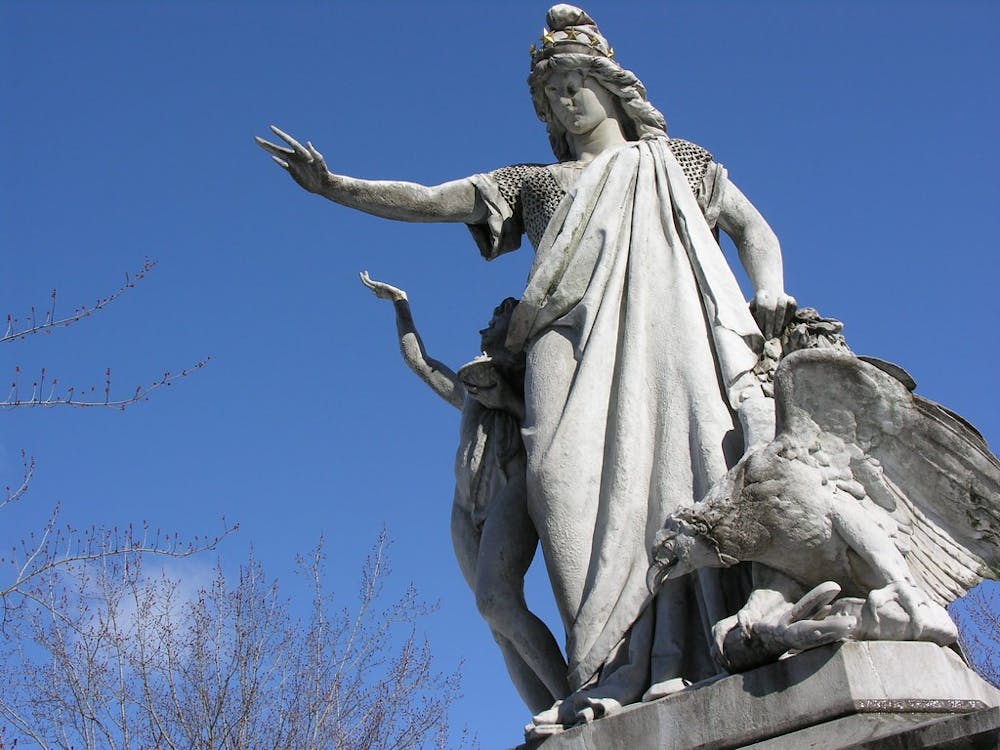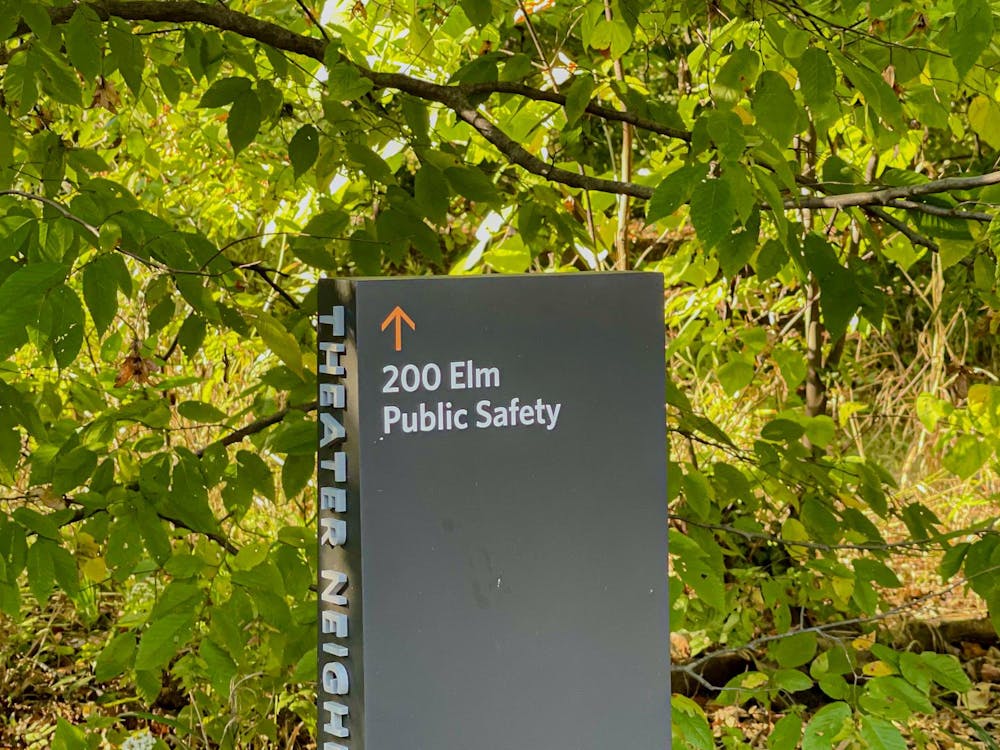The following is a guest contribution and reflects the author’s views alone. For information on how to submit an article to the Opinion Section, click here.
About a year ago, I arranged for an art exhibit to be held at Firestone Library in September 2022 since the Art Museum is under repair. The exhibit was to feature American Jewish artists active in the Gilded Age (1865—1900), planned to coincide with the publication of “Yearning To Breathe Free,” a new book I sponsored in conjunction with Princeton University Press. The title references a line from Emma Lazarus’s poem, “The New Colossus,” which appears at the base of the Statue of Liberty. In putting together all my exhibits and publications, I have been fortunate to receive advice from notable members of the Princeton community, including faculty members.
The Library, with the support of the University, was unwilling to show the exhibit with works by two Confederate soldiers, Theodore Moise and Moses Ezekiel, on the grounds that it might encourage white nationalists to act up, forcing the cancellation of the exhibit.
Recently, an article about the controversy surrounding the exhibit’s cancellation appeared in Religion News Service which included comments by Princeton University officials. The article has stirred debate. I accepted The Daily Princetonian’s offer to comment on this matter because I felt the need to defend myself.
I have held 11 exhibitions at the Princeton Art Museum and Firestone Library and donated 10 collections to the University over the past 40 years without the slightest controversy. Five years ago, the Art Museum held a widely acclaimed show, “By Dawn’s Early Light,“ devoted to the contributions to American culture by American Jewry from 1580 to the Civil War. There were paintings by the very same Theodore Sydney Moise, which included portraits of his aunt Penina Moise — “the Poet Laureate of Charleston, South Carolina” — (whose rare first American Jewish hymn book was also on display) and Henry Clay borrowed from the Metropolitan Museum of Art in New York City. The accompanying catalog fully disclosed Moise’s Confederate background. The exhibit subsequently moved to the New York Historical Society where it was seen by several thousand people and given two favorable reviews by The New York Times. I was not aware of any complaint about Moise’s Confederate past.
The figure “Faith,” sculpted by Moses Ezekiel, was intended to be displayed for the canceled exhibition this fall. Ezekiel’s monument “Religious Liberty,” which includes the figure “Faith,” has been on view in Philadelphia since 1876 and now stands near the Liberty Bell. We planned to borrow Ezekiel’s marble copy of “Faith” from Johns Hopkins University in Baltimore for the exhibit. Beth Wenger, a prominent historian at the University of Pennsylvania, has written an essay in “Yearning to Breathe Free,” in which she states that the snake being attacked by an American eagle in Ezekiel’s statue symbolizes slavery. Ezekiel, after having spent considerable time on the continent and having received widespread recognition, was knighted by three European monarchs. Other Ezekiel figures that were to be included at Firestone were of the composer Franz Liszt, Abraham Lincoln, and Rabbi Isaac Mayer Wise, who helped bring Reform Judaism to America. Ezekiel, who fought in the Confederate Army as a teenager with his Virginia Military Institute classmates, also sculpted the Confederate Memorial at Arlington National Cemetery, for which he was thanked by President William Howard Taft for his creation of a symbol of reconciliation. Former President Barack Obama, while in office for eight years, followed the tradition of laying wreaths on Confederate graves on Memorial Day.
Several years ago, Firestone held an exhibit of my Irish prose collection, which included a number of letters and works by a prominent Irish writer Francis Stuart. Stuart was an extreme Nazi sympathizer, as were his wife Iseult and mother-in-law William Butler Yeats’ beloved Maud Gonne. Stuart spent World War II in Berlin where, at Hitler’s request, he made a number of scurrilous antisemitic broadcasts. Tom Paulin and Oliver St. John Gogarty are two other notable antisemitic Irish literary figures whose works were part of my Irish collection and have been exhibited at Firestone. Paulin excoriated Brooklyn Jews who moved to Israeli settlements, particularly hurtful as a Brooklyn-born Jewish American myself, and Gogarty (who was the model for James Joyce’s character Buck Mulligan), lost a defamation suit brought against him after Gogerty effectively accused Samuel Beckett’s Jewish uncle of seducing young girls. Beckett testified on behalf of his uncle, then immediately left Ireland for France because of the intense rebuke he received from the Irish public after the verdict was rendered. Nevertheless, I felt that I should not erase history but learn from it.
My wish has always been to further knowledge and scholarship at Princeton. To help to achieve this goal I have endowed professorships in Irish letters and Jewish American studies, and I’ve sponsored 15 University-affiliated publications.

I am fully aware of the terrible injustices that have been and continue to occur to Black Americans, which were graphically illustrated by the killing of George Floyd. Our society has a responsibility to eliminate racism, and I understand the motivation behind the removal of Confederate statues. Neither Moise nor Ezekiel’s works, intended for the exhibition, are Confederate monuments, nor do they reference the Confederacy in any way.
Though not comparable in degree to the unconscionable treatment of Black Americans, antisemitism continues to thrive. One of the reasons I sponsor American Jewish exhibits is as an attempt to bring to light the fact that Jews were, and continue to be, part of the fabric of American life. I was proud and delighted when Nicholas Barker, a prominent English critic, praised me for uncovering a forgotten portion of America’s heritage, not just America’s Jewish heritage, when “By Dawn’s Early Light” was on display.
I greatly regret any disagreement — public or private — with Princeton University and hope this matter will soon disappear. Since my freshman year in 1949, I have enjoyed a wonderful relationship with Old Nassau, which I wish to renew as quickly as possible.
Leonard Milberg ’53 is the chairman of Milberg Factors Inc. He’s a longtime patron of art and literature. Among other University affiliations, he has co-sponsored the Ellen and Leonard Milberg Gallery in the lobby of Firestone Library and endowed the Leonard Milberg ’53 Professorship of Jewish American Studies, currently held by Professor Esther Schor.









